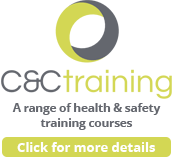Ensuring Health and Safety In Construction
Prioritising health and safety in construction isn’t simply a legal requirement; it’s also a moral obligation.
As a leading health and safety consultancy firm, here at C&C Consulting, we have a deep understanding of the critical role effective health and safety plays in the construction industry.
In this article, we look closer at health and safety in construction, with sections including:
- Health & Safety Legislation for Construction
- Health & Safety Regulations for Construction
- Managing Construction for Health & Safety
- What to include in a Health & Safety Plan for Construction
Health and Safety Legislation for Construction
In the UK, the construction industry operates under stringent health and safety legislation, including The Health & Safety At Work Act 1974, an act designed to protect workers from hazards and to promote a safe working environment.
Businesses that fail to adhere to the Health and Safety at Work Act 1974, may face legal consequences, including fines, prosecution, and potential imprisonment for company directors or managers found responsible for breaches.
But don’t worry – this article and we at C&C Consulting are here to assist you in properly managing health and safety on your construction site.
Health & Safety Regulations for Construction
As well as The Health & Safety At Work Act 1974, workers in construction are also protected by the Construction (Design and Management) Regulations 2015 (CDM Regulations) which outline duties and responsibilities for managing health and safety throughout the construction process.
Under CDM Regulations, different aspects of health and safety are covered, such as risk assessment, cooperation and coordination among duty holders, and ensuring welfare facilities for workers.
Compliance with CDM regulations is essential, as it helps to significantly minimize the risk of accidents and injuries, and other occupational health risks associated with working in the construction industry.
Managing Construction for Health and Safety
Aside from understanding regulations and legislation in construction, as already mentioned, effective management of construction projects requires integrating health and safety considerations into every phase of the project lifecycle.
However, depending on the size and complexity of the construction project, ensuring everyone on a construction site is safe can be a huge task, which may require the services of a health and safety consultancy such as C&C Consulting.
Your health and safety consultant or consultants will have a range of roles connected to health and safety management, which will include, amongst other things:
- Providing expert guidance to ensure compliance with regulations and standards
- Helping you conduct risk assessments and method statements, site inspections and audits
- Recommending corrective actions
- Helping you investigate incidents or accidents
At C&C Consulting, our team can help you with all of the points above, and various other aspects of health and safety management for your construction project.
We offer a range of packages of varying service levels, designed to suit the needs and budgets of construction projects of all types and sizes.
What to Include in a Health and Safety Plan for Construction
With over a decade of experience, at C&C Consulting, we fully understand the complexities and challenges involved in managing health and safety within the construction industry.
Using this knowledge and experience, below we’ve included a list of what to include when devising a comprehensive health and safety plan for your construction project.
The Plan
Health and Safety Project Overview
Your health and safety plan for your construction project should begin with a detailed description of the project, including the scope of work, timeline and key milestones.
This overview sets the context for the safety measures and helps the project stakeholders fully understand the specifics around health and safety.
Legal And Regulatory Health and Safety Compliance
Your health and safety plan (HASP) must reference all relevant laws, standards and guidelines, such as the Health & Safety at Work Act 1974, and CDM 2015.
Making sure your project adheres to these regulations and standards will help you avoid potential and costly legal issues, and help ensure safety onsite at all times.
Health and Safety Risk Assessment And Management
When putting your health and safety plan together, it’s essential to carry out a thorough risk assessment to identify potential hazards associated with your project.
The assessment should include risks related to equipment, materials, and construction activities, and lead to developing strategies to mitigate risks identified.
Health and Safety Roles And Responsibilities
Your health and safety plan for your construction project should clearly define the roles and responsibilities of everyone involved in the project.
Your list should include project managers, supervisors, workers and subcontractors, and should specify who’s responsible for implementing health and safety measures.
Once this list is compiled in your HASP, it’s also essential that all personnel are aware of their responsibilities and have received the relevant and thorough training.
Training And Induction
Your HASP needs to include plans for health and safety training for all workers and subcontractors and should cover:
- General safety procedures
- Emergency protocols
- Specific training related to individual tasks
You should also conduct regular safety briefings and refreshers to help keep safety at the forefront of everyone’s mind.
Site Safety Rules And Procedures
Within your plan, make sure you establish clear site safety rules and procedures that all workers and subcontractors must follow. This includes:
- Guidelines for the use of PPE (personal protective equipment)
- Guidelines for machinery operation
- Guidelines on safe working practices
And to reinforce these rules, it’s also important to display the correct signage prominently around the site.
Emergency Preparedness
Within your health and safety plan, develop an emergency response plan which details all procedures in the event of accidents, fires, or other emergencies. This list should include:
- Evacuation routes
- Emergency contact numbers
- The location of First Aid stations and equipment
Once you’ve put a list together, make sure to carry out regular emergency drills to ensure everyone involved with the project knows how to respond in an emergency.
Health Monitoring And Welfare Facilities
When devising your HASP, make sure you provide welfare facilities for workers, including clean toilets and drinking water, and adequate break areas.
You should also implement health monitoring programs to identify and address any work-related health issues early on and ensure workers have access to medical support.
Inspection Audits
With your HASP in place, make sure to regularly inspect the site to ensure compliance, and to identify any potential hazards that might have occurred.
You should also carry out audits for accountability to evaluate the effectiveness of your health and safety measures and make improvements where necessary.
Continuous Improvement
Health and safety in construction is an ongoing process, so make sure to continuously review and update your HASP to reflect new regulations, risks, and lessons learned.
Engage with workers and subcontractors, gather feedback, and make the necessary adjustments to keep your health and safety plan for your construction project on track.
Conclusion
Health and safety in construction are non-negotiable priorities that require proactive management, adherence to legislation and regulations, and a commitment to creating a culture of safety.
As a trusted health and safety consultancy firm, C&C Consulting works with construction companies to develop tailored solutions that promote safe working practices, protect lives, and drive success in the construction industry.










